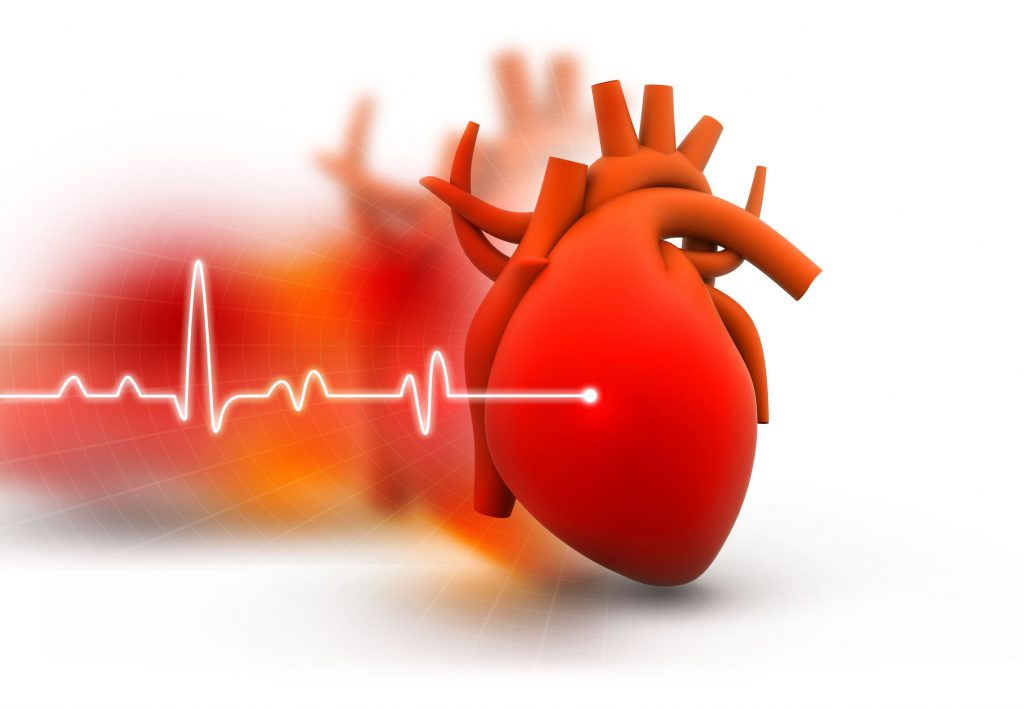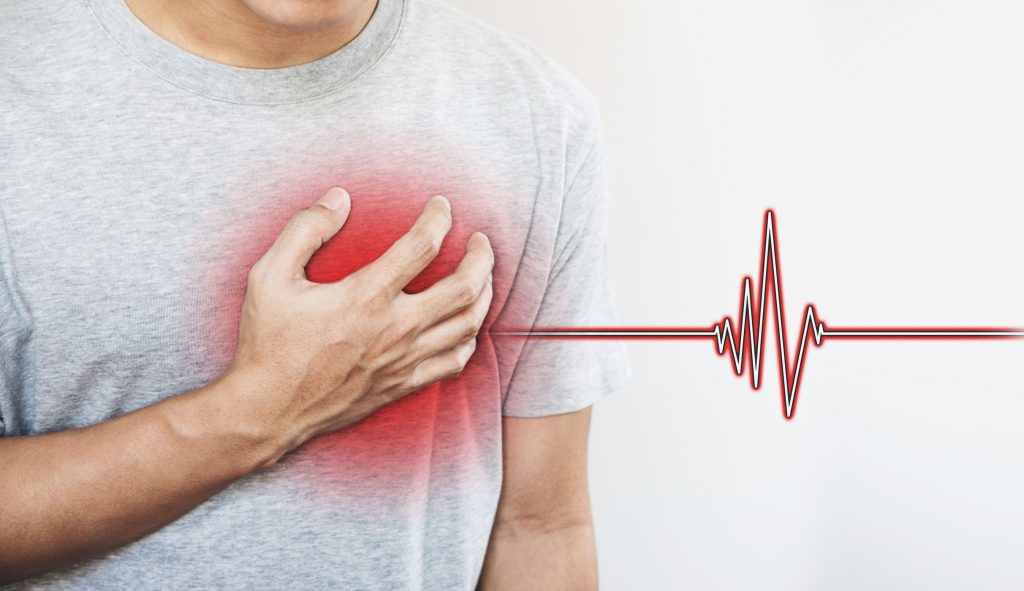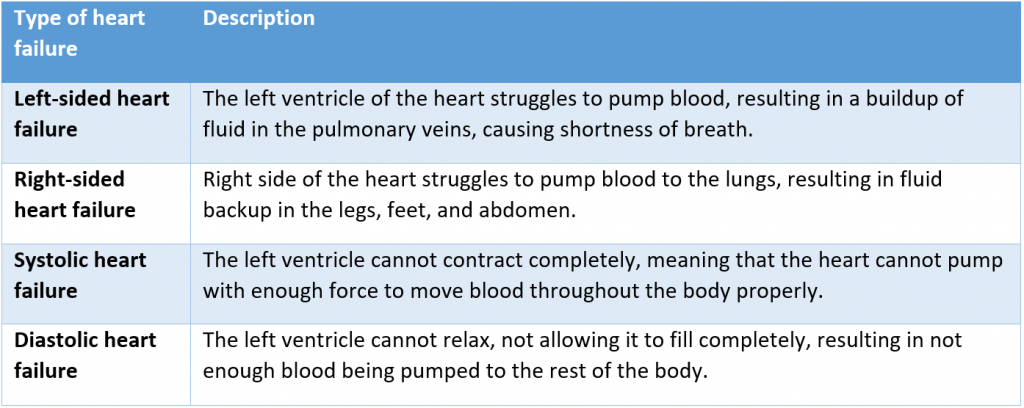Different Types Of Heart Disease – Symptoms Of Each, Risk Factors
Posted by Prescription Hope - See Editorial Guidelines (Last Updated On: Tue Apr 25 2023)
Heart disease is a term that serves as an umbrella for various forms of heart conditions. There are many different types of heart disease, which we will cover in this article.
Heart disease is the leading cause of death in the United States, with about 647,000 people dying every year. So, we will cover what the different types of heart disease are, along with common treatments and risk factors. Here is a brief summary to get you started.

Different Types of Heart Disease: Heart disease is any condition that affects the functions of the heart. There are many different types of heart disease, some of which are known as congenital heart defects prevalent from birth. However, most types of heart diseases develop over time during a person’s life.
Now that you have a basic understanding, here are some of the most common types of heart disease.
Types of Heart Disease and Their Symptoms
With there being many different types of heart disease, it can get complicated. So, here are the most common heart diseases and their symptoms.
Coronary Artery Disease
Coronary artery disease is the most common type of heart disease affecting over 18 million adults in the United States. This condition is described as the narrowing of the coronary arteries.
The narrowing and blockage of the coronary arteries are often caused by atherosclerosis, which is the buildup of plaque on the interior artery walls. The accumulation of plaque, which usually consists of cholesterol and fatty deposits, restricts blood flow.
The restriction of blood flow limits the amount of oxygen and nutrients supplied to the heart, leading to chest pain (angina). If coronary artery disease is severe, then blood flow could be potentially cut off entirely to the heart. This can result in a heart attack.
Symptoms of coronary artery disease may include:
- Angina (pain, tightness, pressure in the chest)
- Fatigue
- Cold Sweats
- Dizziness
- Lightheadedness
- Nausea
- Neck pain
- Shortness of breath
- Weakness
It is important to note here that these symptoms could be signs of a heart attack. You should call your doctor and seek immediate medical attention.
Silent Ischemia
Silent Ischemia is a condition described as the heart not receiving enough oxygen without the presence of symptoms. Ischemia is the narrowing or blockage of blood flow, resulting in a lack of oxygen to the heart.
Typically, silent ischemia only lasts for a short period. It can often disrupt the rhythm of the heart, possibly causing fainting and even a heart attack.
As mentioned before, silent ischemia does not have symptoms. However, individuals that have had noticeable chest pain may also have episodes of silent ischemia without realizing it. This means that those with silent ischemia may have a heart attack without displaying any of the warning signs.
Generally, those that are most at risk include people that have had previous heart attacks or have diabetes.
Myocardial Infarction
Myocardial infarction is another term for heart attack. A heart attack is caused by a lack of blood flow, typically caused by a blockage in an artery.
A myocardial infarction can also occur if the heart’s demand for oxygen is greater than the supply. Therefore, even just slower than normal blood flow can result in myocardial infarction. Slow blood flow can be due to a very rapid heartbeat or from low blood pressure.

The most common symptom of a heart attack is chest pain that can feel like heavy pressure, stabbing, or burning. The chest pain can spread to the arms, abdomen, neck, or lower jaw. Other symptoms of myocardial infarction may include:
- Weakness
- Sweating
- Nausea
- Vomiting
- Shortness of breath
- Lightheadedness
Heart Failure
Heart failure, sometimes called congestive heart failure, is described as your heart not being able to pump blood as well. The chambers of the heart may become stiff and not fill with between beats appropriately.
So, the heart struggles to pump blood efficiently to the rest of the body. Therefore, the heart cannot keep up with the demands of the rest of the body.
Heart failure is often due to other conditions weakening the heart. However, there are some instances where heart failure can occur suddenly if the heart becomes stiff.
There are different types of heart failure, which are listed in the table.

Symptoms of heart failure include:
- Shortness of breath
- Fatigue
- Edema (swelling in legs, ankles, or feet)
- Rapid heartbeat
- Irregular heartbeat
- Persistent cough or wheezing
- Increased urination, particularly at night
- Weight gain from fluid retention
- Nausea
- Reduced appetite
- Lack of concentration
- Chest pain
Arrhythmia
Arrhythmia is a type of heart disease that is characterized by the electrical impulses in the heart not working properly. This means your heart may beat too rapidly, too slowly, or irregularly.
Many factors can lead to arrhythmia, which may include heart attack, smoking, stress, and other defects. Symptoms of arrhythmia may include:
- Rapid or slow heartbeat
- Heart skipping beats
- Lightheadedness
- Dizziness
- Chest pain
- Shortness of breath
- Sweating
Congenital Heart Defects
Congenital heart defects, sometimes called congenital heart disease, refers to a problem with the structure of the heart. Typically, heart defects are present at birth and can affect many different aspects of the heart, including the arteries, veins, and valves of the heart.
Heart defects often disrupt the flow of blood to and from the heart, which can be life-threatening. Some congenital heart defects do not present signs until the child is older. Those with heart defects may need to be on medication for the remainder of their life or may need surgery or even a transplant.
Signs of heart defects may include:
- Rapid breathing
- Cyanosis – bluish tint to the skin
- Fatigue
- Poor blood circulation
- Edema
Peripheral Artery Disease
Peripheral artery disease is a type of heart disease characterized by the narrowing of the arteries that provide nutrients to extremities, the head, and the stomach. Just like with coronary artery disease, peripheral artery disease is often caused by atherosclerosis.
Those that have peripheral artery disease are more likely to have a heart attack, stroke, and coronary artery disease. It can also lead to gangrene and amputation if it is not treated correctly.
Symptoms of peripheral artery disease may include:
- Cramping and pain in lower extremities
- Leg numbness
- Leg weakness
- Sores on legs, feet, or ankles that will not heal
- Change in the color of your legs
- Hair loss on your legs
- Slow toenail growth
- Weak pulse in legs and feet
- Erectile dysfunction
Common Treatment Options for Different Types of Heart Disease

Treatments for heart disease will vary depending on the type you need to treat.
You may be able to treat some types of heart disease by making lifestyle changes. These changes may include adjustments to your diet, exercising regularly, quitting smoking, and limiting alcohol consumption.
Making lifestyle changes can help you healthily deal with stress, placing less strain on your heart. It can help you control your blood pressure and mitigate your risk of having new or worsening health conditions.
Though lifestyle changes can significantly improve one’s health, it may not provide the treatment one needs. In this case, medications may be prescribed to treat one’s heart condition. Common medications that are proven to be beneficial for heart conditions include:
- Statins
- Aspirin
- Clopidogrel
- Warfarin
- Beta-Blockers
- ACE Inhibitors
Many of these medications are prescribed to prevent heart attacks, fluctuations in blood pressure, and blood clots.
If medications are not enough to treat your heart condition, then you may require surgery or other medical procedure. The procedure that you require will depend upon your specific heart condition and the severity of your condition.
Who’s at Risk for the Different Types of Heart Disease?
Many of the risk factors for the different types of heart disease are similar. The three main risk factors for heart disease include:
- High blood pressure
- High cholesterol
- Smoking
Other risk factors for heart disease include:
- Age
- Family history
- Diabetes
- Obesity
- High alcohol consumption
- Sedentary lifestyle
As you can see, some risk factors, such as age and family history, are not controllable. However, many of the risk factors are controllable. If you are already in a high-risk category for heart disease, then you should take steps to lessen your potential for having heart disease.
Conclusion
We hope this has given you greater insight into the different types of heart disease and a better understanding of each. For concerns regarding your specific condition, always consult your healthcare provider.
If you are paying more than $60.00 a month through Prescription Hope’s medication access service for your heart medication or other prescribed drug, then contact Prescription Hope. The team here works directly with pharmaceutical companies to provide you with the medication you need at a set, affordable cost. Enroll with us and start saving money.

